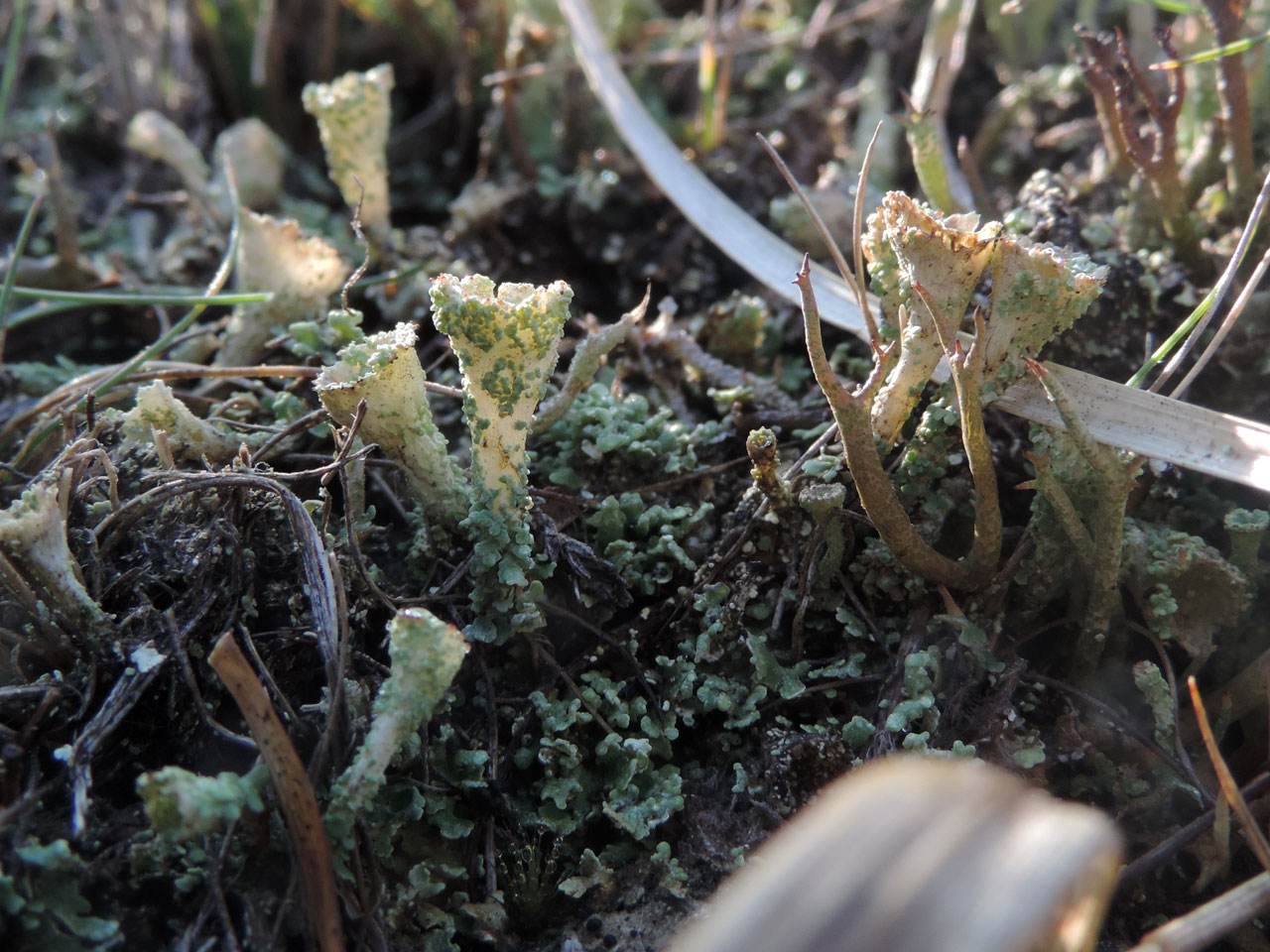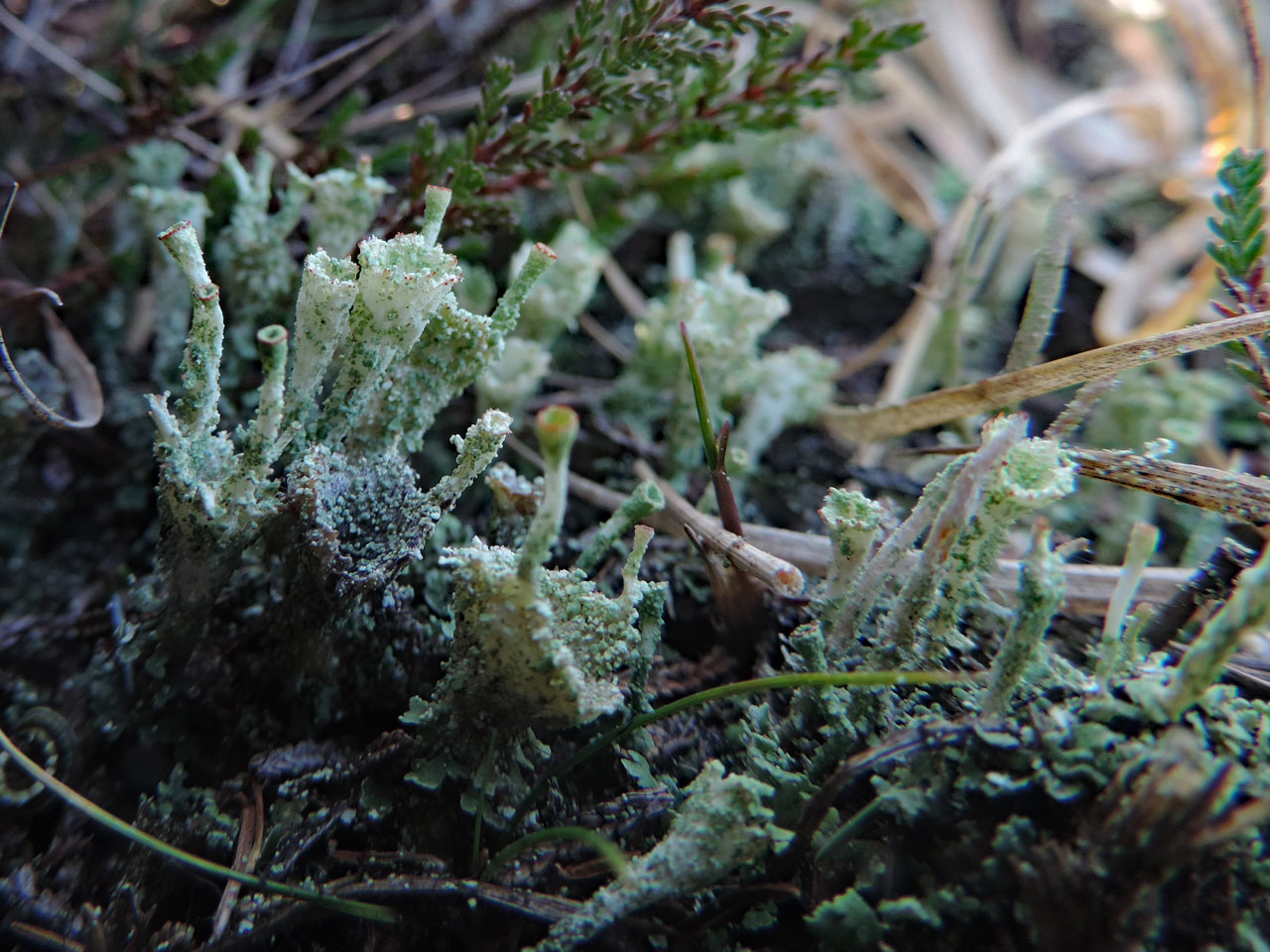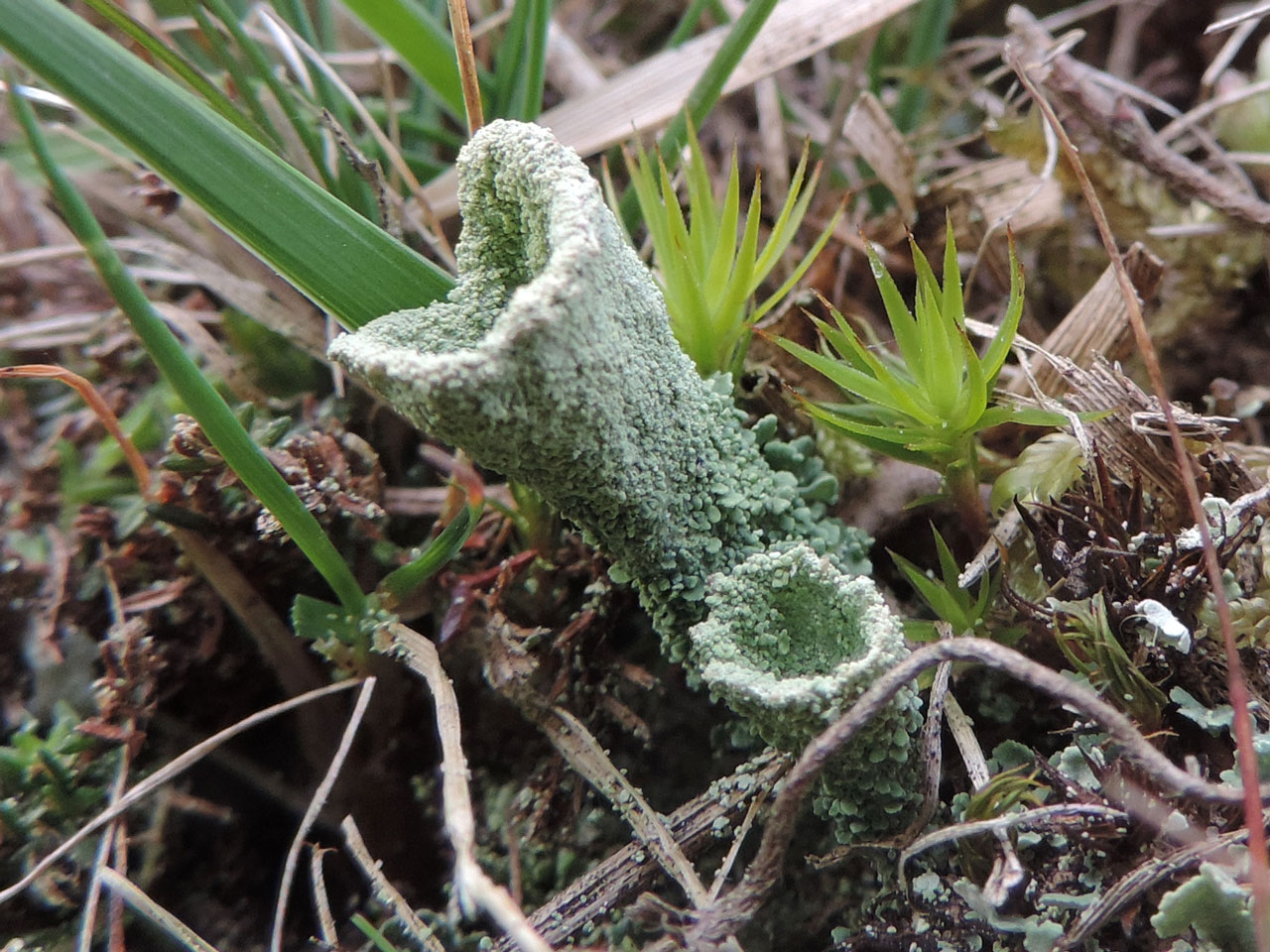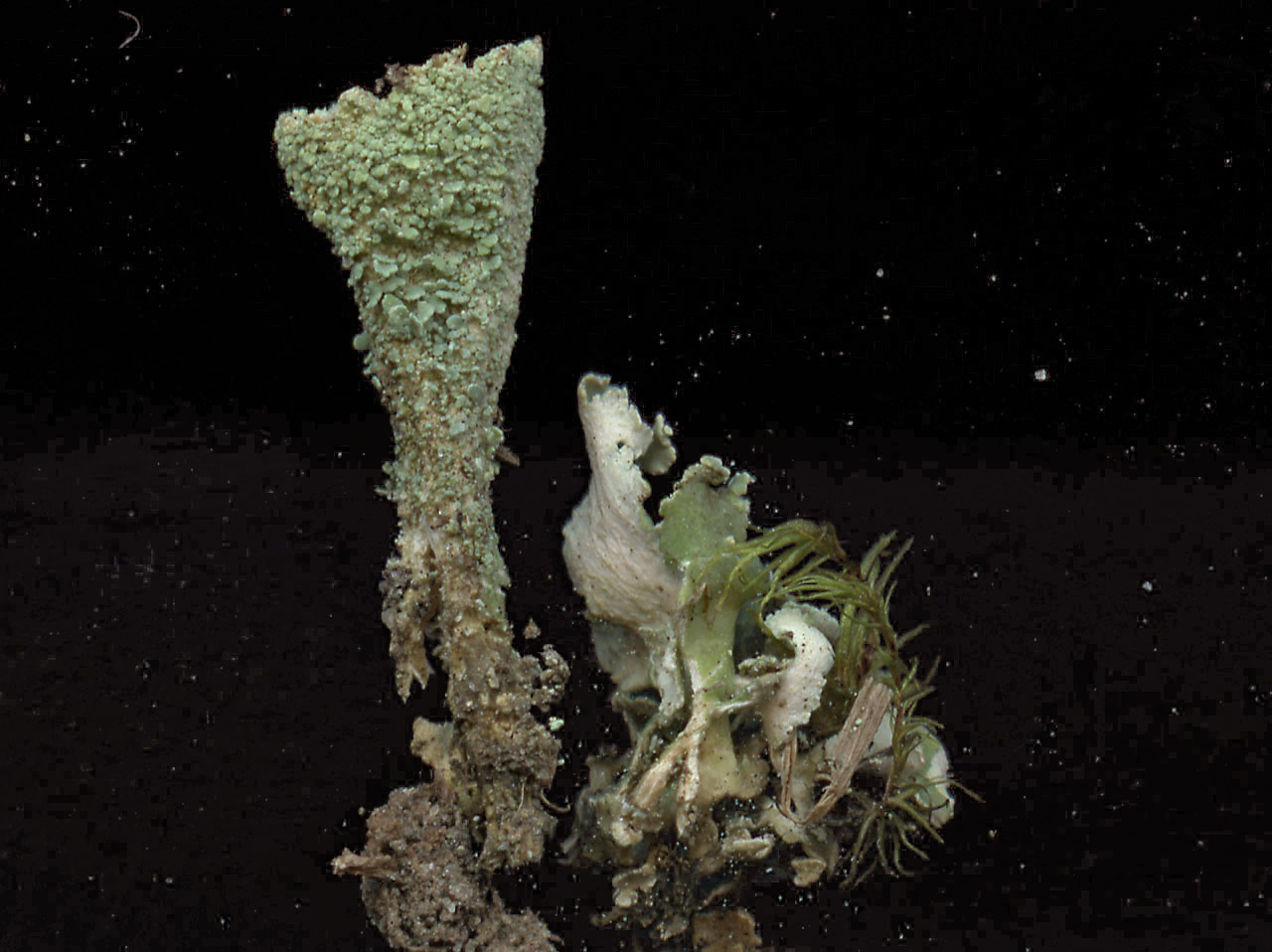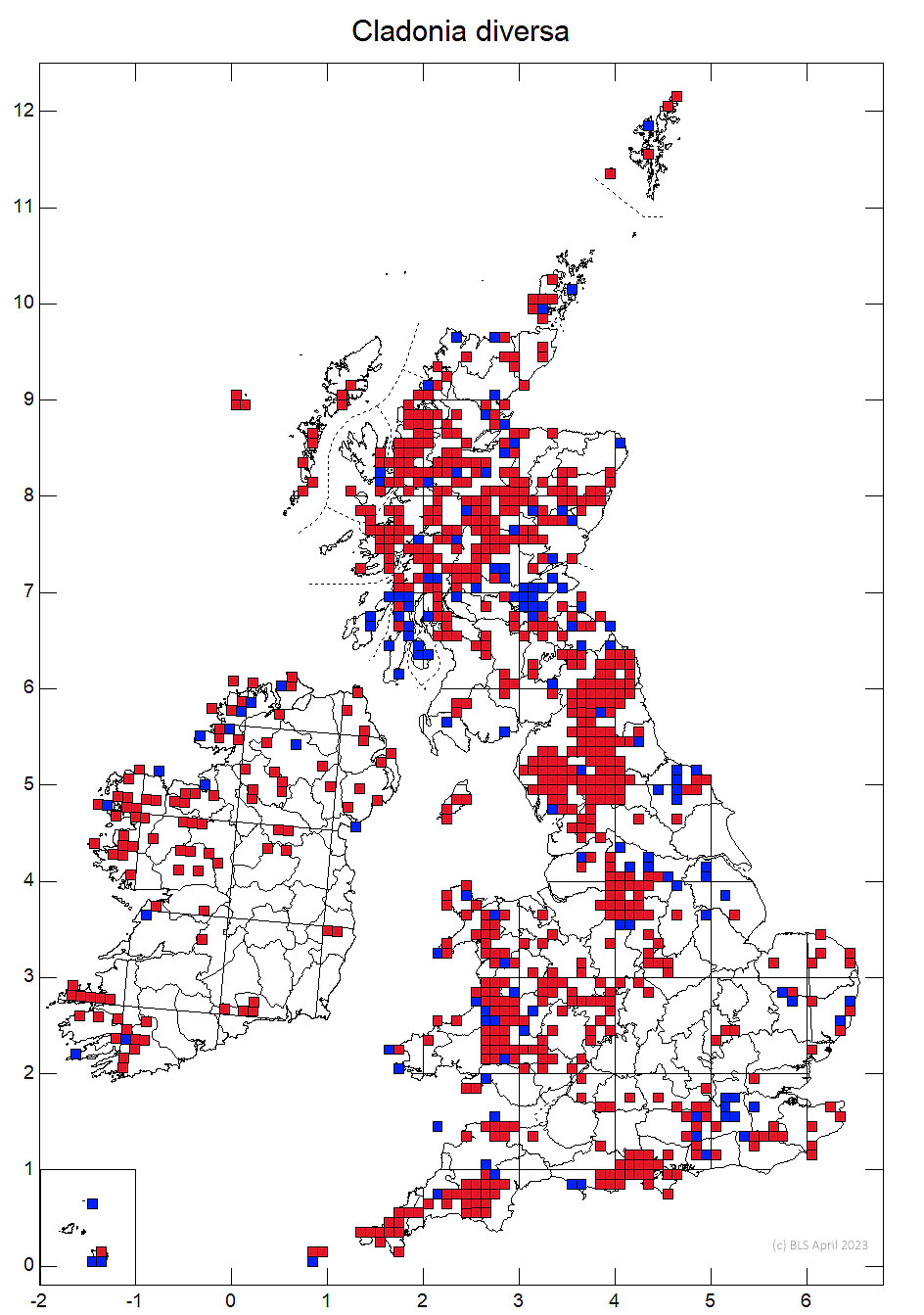Cladonia diversa
A Red Pixie Cup, which is the most widespread species in the Cladonia coccifera aggregate and the only one present in many lowland areas. Cladonia coccifera s. str. can occur in high quality sites in the lowlands, however, and the presence of only Cladonia diversa should not be assumed. Cladonia diversa has narrow evenly tapering cup, compared to the wider flaring cups of Cladonia coccifera s. str. and Cladonia borealis. The podetia stalks are also covered in small squamules, often flaking off, while the other two species have irregularly granular or smooth platey surfaces dominating the podetia.
Similar to Cladonia coccifera s. str., but the podetia are regular to ± uneven, densely squamulose, with corticate, easily detached granules, microsquamules and scale-like plates in the upper part and within the cup. Thallus C–, K–, Pd–, UV– (usnic and porphyrilic acids, zeorin).
Part of the Cladonia coccifera aggregate. The minutely squamulose podetia are important in diagnosis, and they are generally more slender with narrower cups compared with other members of the group.
On soil over rocks and walls, peat and sandy soils in heaths, tree bases and lignum etc., in upland and lowland habitats

Widespread and common throughout Britain and Ireland.
References
Pino-Bodas, R., Sanderson, N., Cannon, P., Aptroot, A., Coppins, B., Orange, A. & Simkin, J. (2021). Lecanorales: Cladoniaceae, including the genera Cladonia, Pilophorusand Pycnothelia. Revisions of British and Irish Lichens19: 1-45. Link
Text by N A Sanderson, based Pino-Bodas et al (2021)
